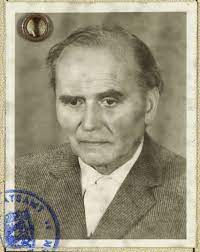
of the Federal Republic of Germany.
Image credit: German National Museum
Gothein’s only wordless novel in woodcuts, Die Seiltänzerin Und Ihr Clown (The Tightrope Walker And Her Clown) is a story involving a clown’s love, infatuation, loss, desperation and death.
Werner Gothein (born March 8, 1890 in Karlsruhe, died June 2, 1968 in Unteruhldingen) was a German visual artist.
Gothein was a student of Pechstein and Kirchner. In the Second World War, he had started woodcutting, inspired by Frans Masereel. From 1945 until his death in 1968, Gothein lived in Unteruhldingen on Lake Constance.
Die Seiltänzerin und ihr Clown 1949 and 1955 (translated: The Tightrope Walker and Her Clown) is his only wordless novel. He did two other wordless pieces, Hiob (Job) in 1953 and Abraham in 1956. As far as I can tell they just illustrate highlights of a biblical story without “telling” any story.
Die Seiltänzerin Und Ihr Clown 1949
- Title: Die Seiltänzerin Und Ihr Clown (The Tightrope Walker And Her Clown)
- Subtitle: Eine Erzählung in Holzschnitten von Werner Gothein (A story in woodcuts by Werner Gothein)
- Author and Illustrator: Werner Gothein
- Dedication: Walter Kaesbach
- Date: October 1949
- ISBN: not applicable
- Publisher: Lovis Presse
- Place of publication: Schwenningen/Neckar is in the German state of Baden-Württemberg.
- Printer: Herman Kuhn KG.
- Copyright: artist?
- Size: 4to; Measures 11.8″ x 10.6″ x 0.9″ (30.0 cm x 26.9 cm x 2.3 cm)
- Slipcase: light card material typical of a mailing enclosure
- Dust jacket: Yes – designed by the artist
- Binding: soft cover
- Dust jacket: paper with print on front cover
- Language: German titles, etc
- Paginated: unpaginated
- Printed: recto
- Edition:
- 25 special copies (extra crayon drawing as per below???). How are these differentiated by number?
- 500 numbered & signed copies (I believe # 1 to #500 as a listing for a 1955 edition has #509)
- unpaginated
- Description: told in 102 black and white woodcut prints, printed directly from the blocks.
- blocks were cut on the plank side ie not on the end grain.
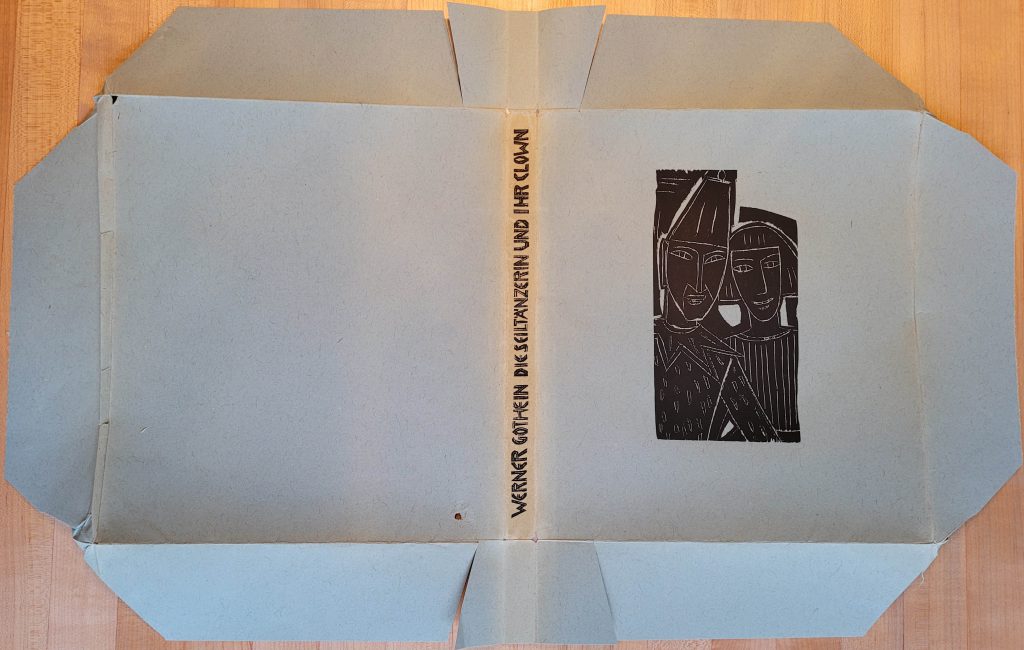
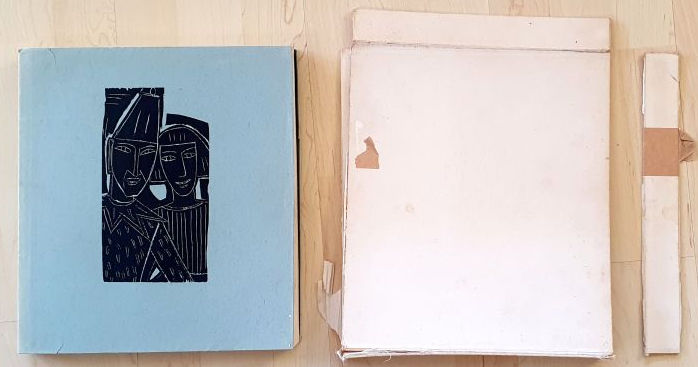
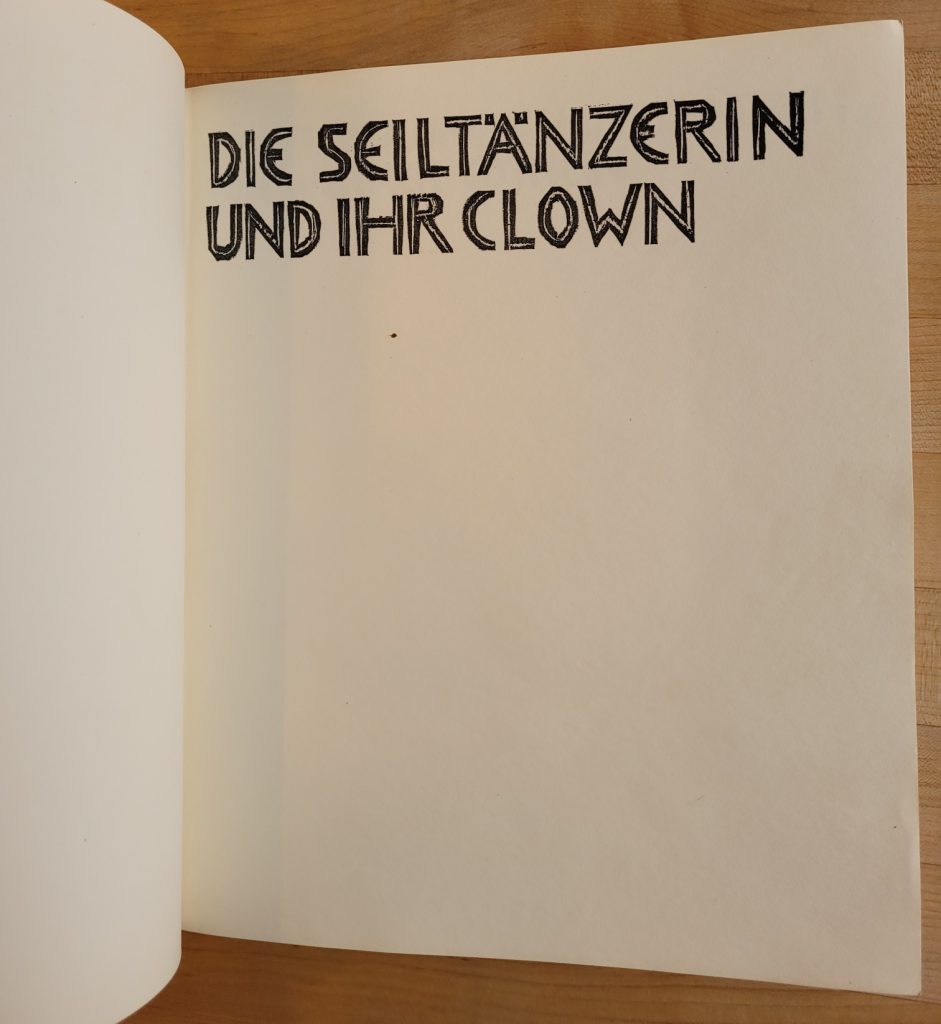
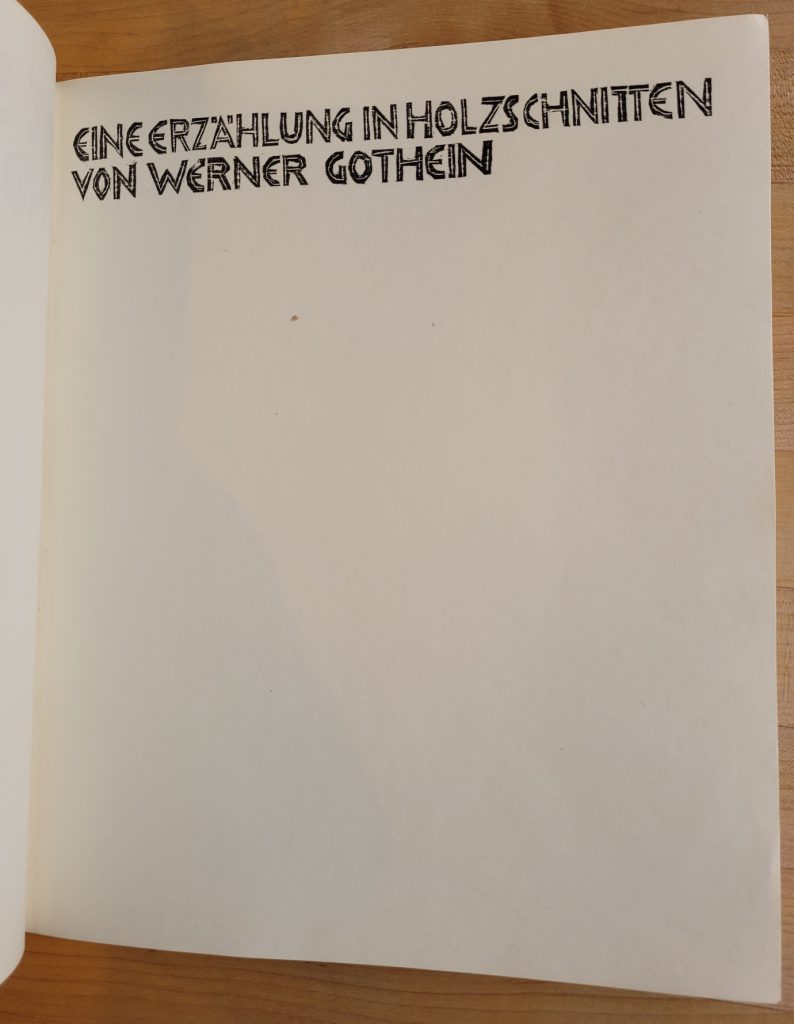
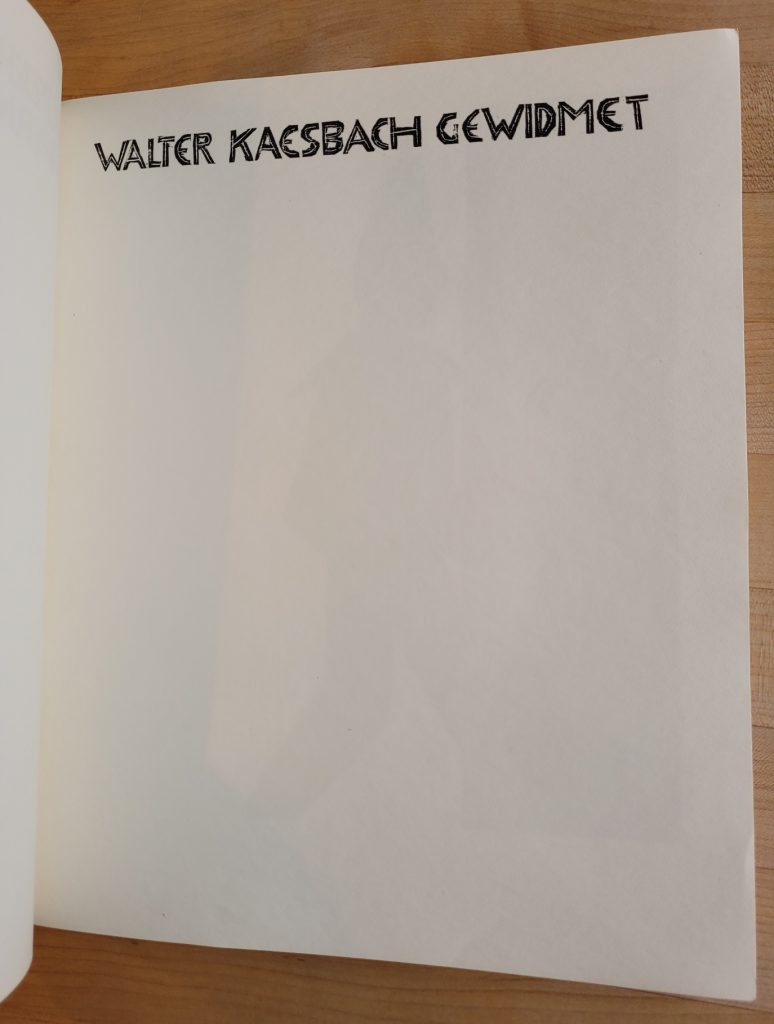
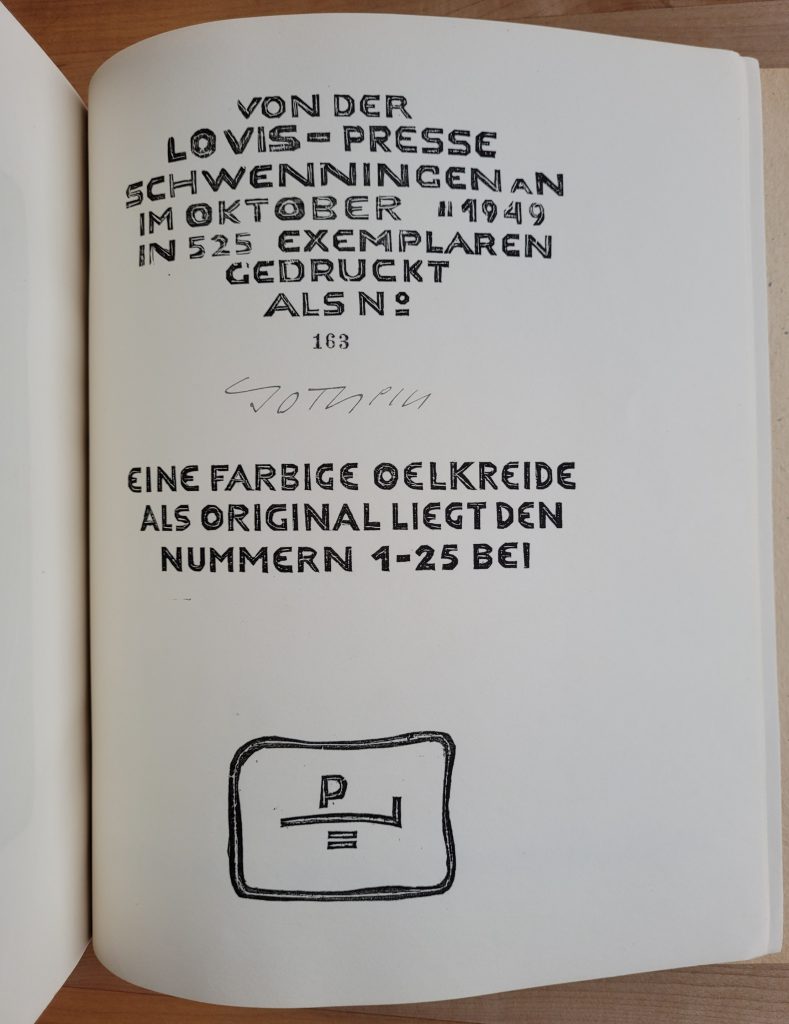
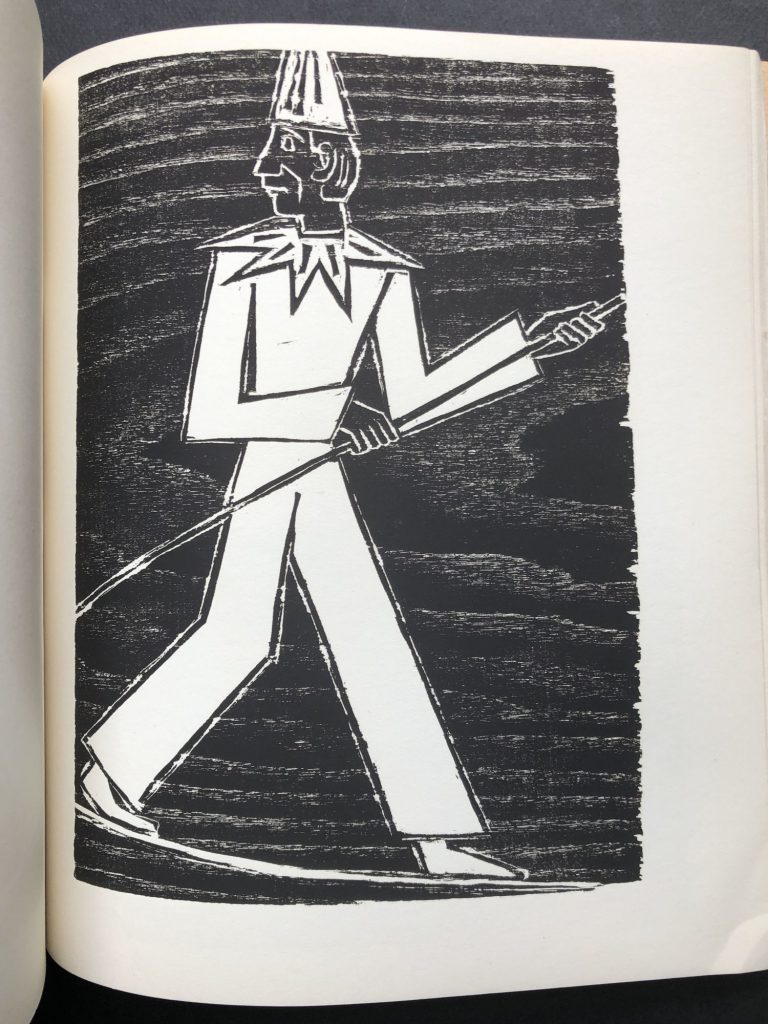
plank side and not on the end grain.
1955 Edition
- Date: August 1955
- hard cover
- 2nd Edition: 500 copies numbered and signed. I am unclear as to how the numbering goes – see below
- since there was a 1955 edition numbered 509 – one can assume the numbering started at 501 going to No. 1000
- but this doesn’t take into account the special edition of 25 from the 1st edition.
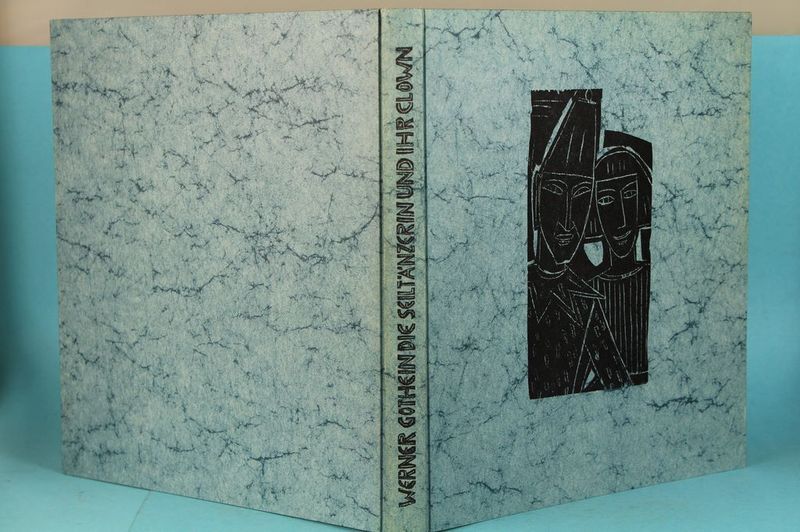
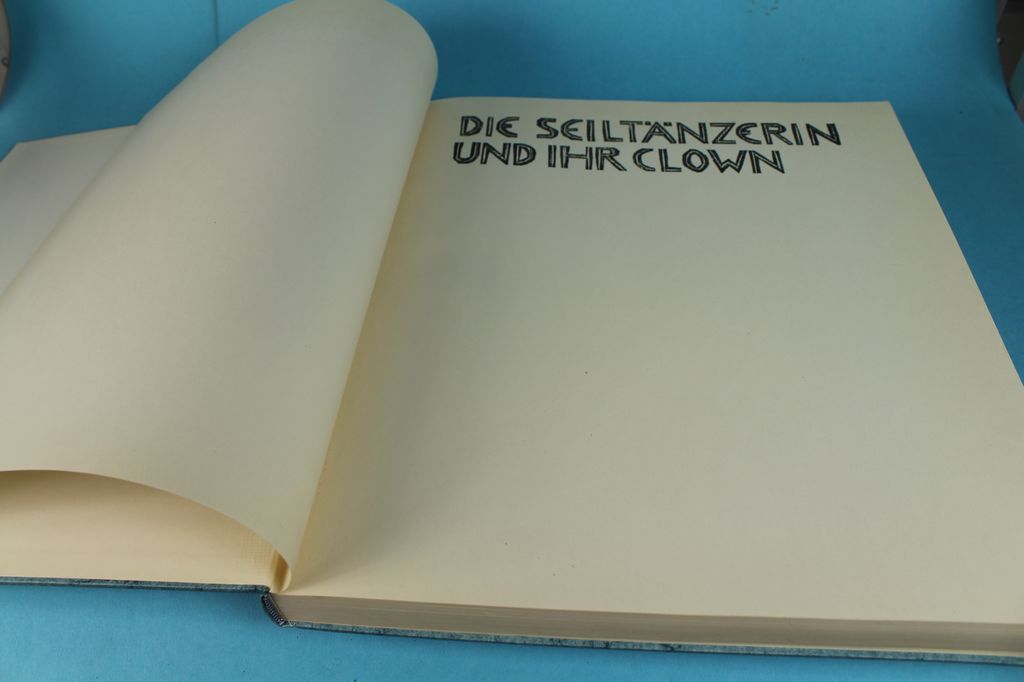
Numbering on 2nd edition of 1955
Some copies are numbered 780 or 904, others are numbered 1000/21 or 1000/26.
Does anyone have an explanation for the different numbering systems?
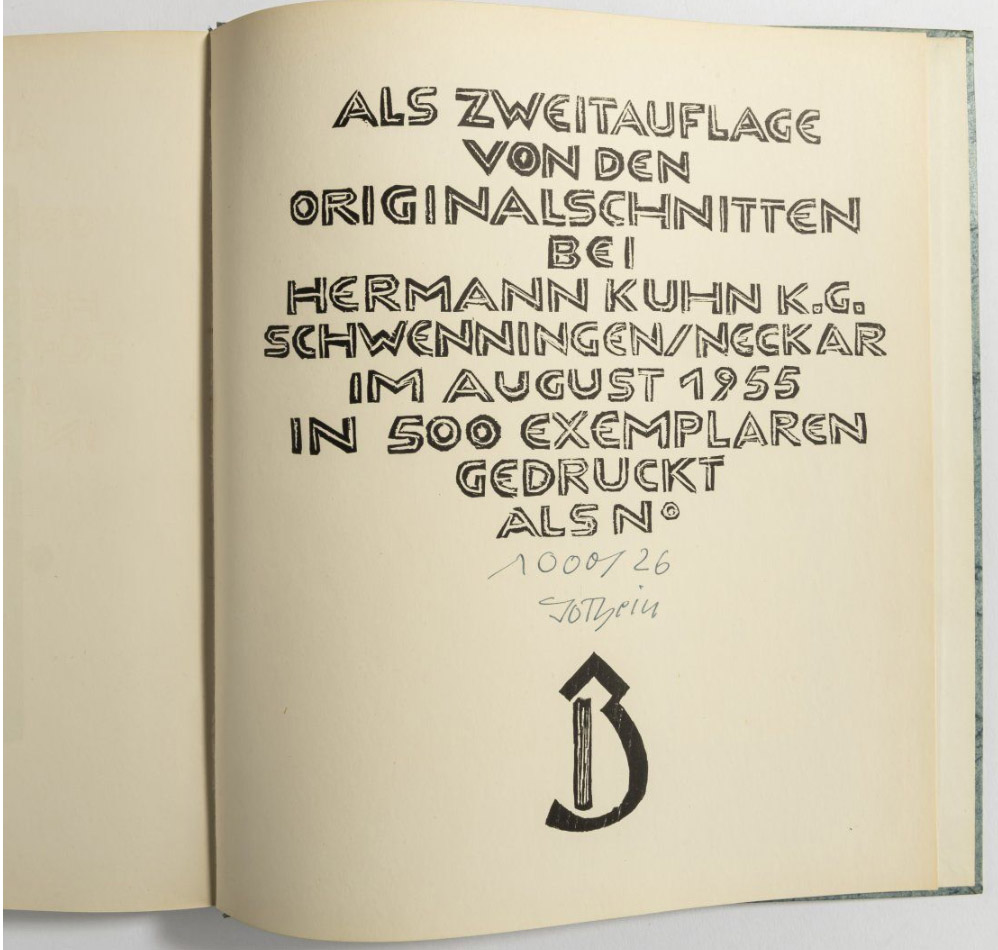
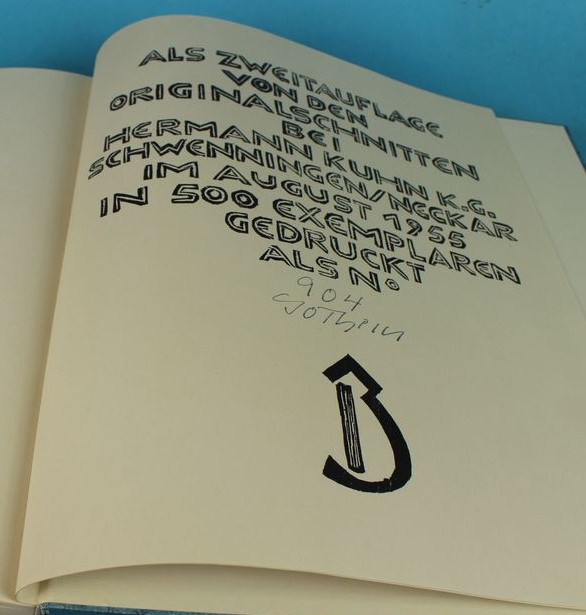
COMMENTS
If you disagree with something on this page, have an improvement, or have a comment please contact me
wn at wordlessnovels.com
Any information used will be given a credit line.